A beautiful, layered Lemon Coconut Cake made from scratch. Featuring a soft and tender lemon sponge filled with toasted coconut and covered in a luscious lemon coconut buttercream, this cake is perfect for birthdays or Easter celebrations.
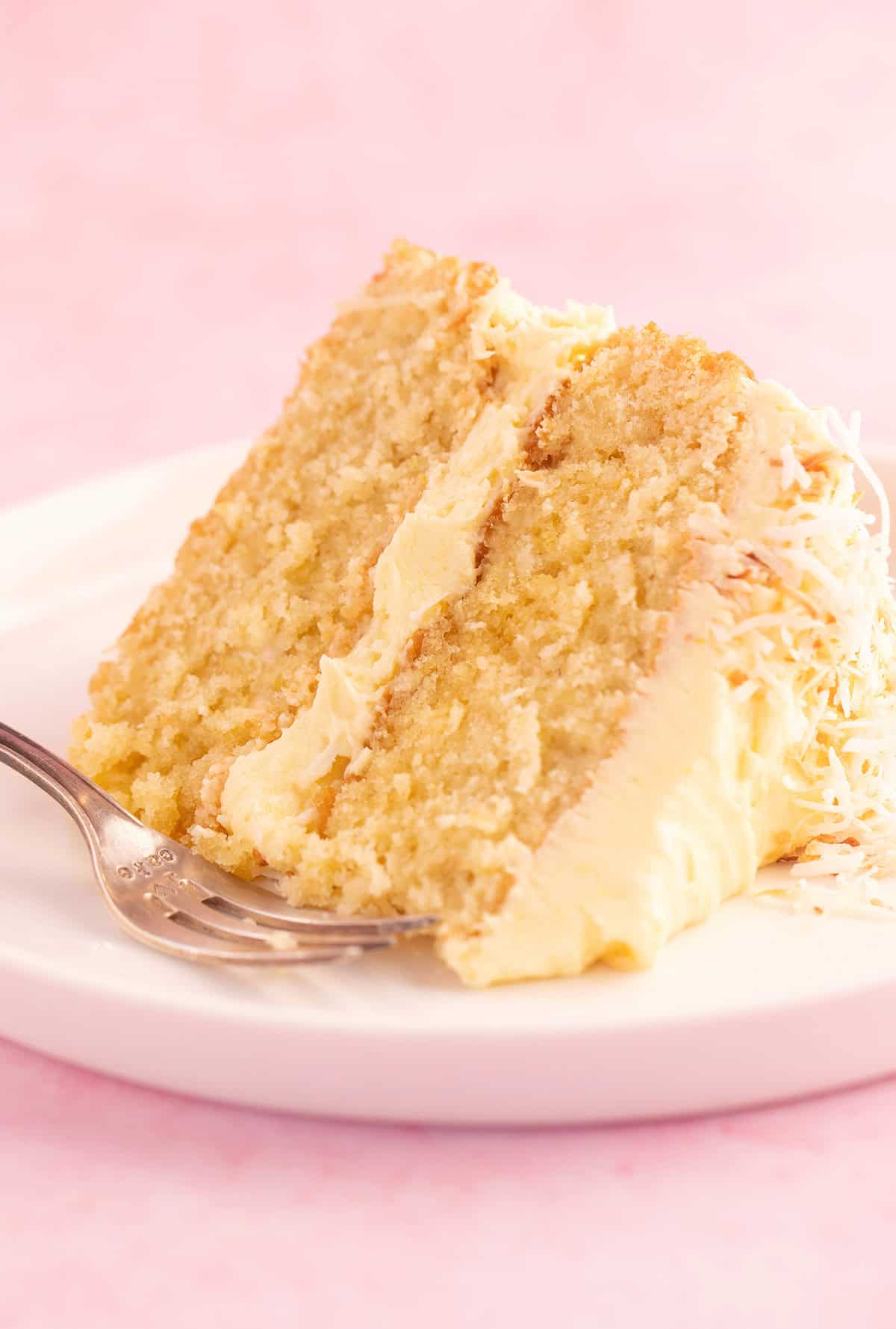
Hello Easter! Hello all things lemon. And now we have a new lemon-y dessert to swoon over. My Lemon Coconut Cake is the ultimate celebration cake.
- Why you will love this recipe
- Recipe testing
- Ingredients for Lemon Coconut Cake
- How to make Lemon Coconut Cake
- How to toast coconut
- Ingredients for Lemon Coconut Buttercream
- How to make Lemon Coconut Buttercream
- Storage instructions
- Jess’s recipe tips
- Frequently asked questions
- More Lemon Desserts
- Lemon Coconut Cake Recipe
With two show-stopping layers of zesty lemon sponge filled with fresh lemon zest, coconut cream and toasted coconut flakes, it’s a stunning spring time treat.
All finished with a thick layer of my favourite lemon coconut buttercream frosting. It’s the perfect choice for birthdays, celebrations or Easter lunch.
Why you will love this recipe
- Easy to make: The reverse creaming method means you don’t have to cream your butter and sugar perfectly to get a soft sponge – it’s a great technique for beginner bakers.
- Soft and tender: You can expect a lovely fluffy, velvety texture on this cake and a melt-in-your-mouth buttercream.
- Packed with flavour: Filled with fresh lemon zest and plenty of toasted coconut and topped with a lemon coconut buttercream, this cake is bursting with flavour from top to bottom.
- Feeds a crowd: With two thick cake layers, this 8-inch cake will easily feed 12-14 people.
Absolutely delicious. Lovely combination of lemon and coconut. I will definitely make this again!! Easy recipe to follow. Thanks Jess 😘
– Wren
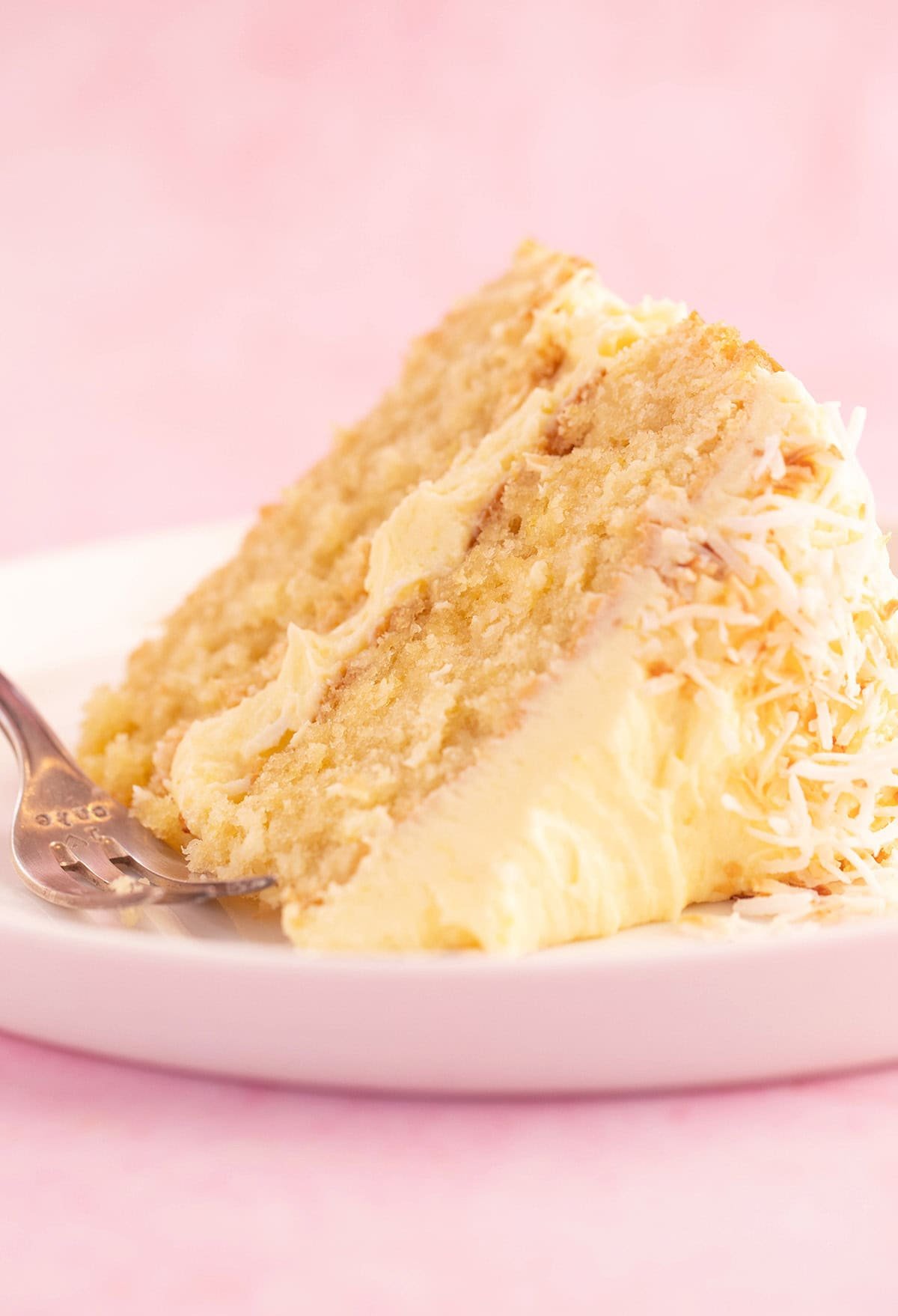
Recipe testing
With Easter on my mind, I couldn’t wait to test an amazing Lemon Coconut Cake. After all, my classic Coconut Cake is one of my all-time favourite recipes, with my buttery Lemon Pound Cake a close second.
So I felt like I had a good place to start. But I wanted to make sure this cake had the perfect crumb – and that made me go full circle. I tried to make a lemon cake using the creaming method and the reverse creaming method.
I tried using egg whites and sour cream for a lighter sponge (but it came out more spongey and dense). I tried so many things before I came back to my tried and true Coconut Cake.
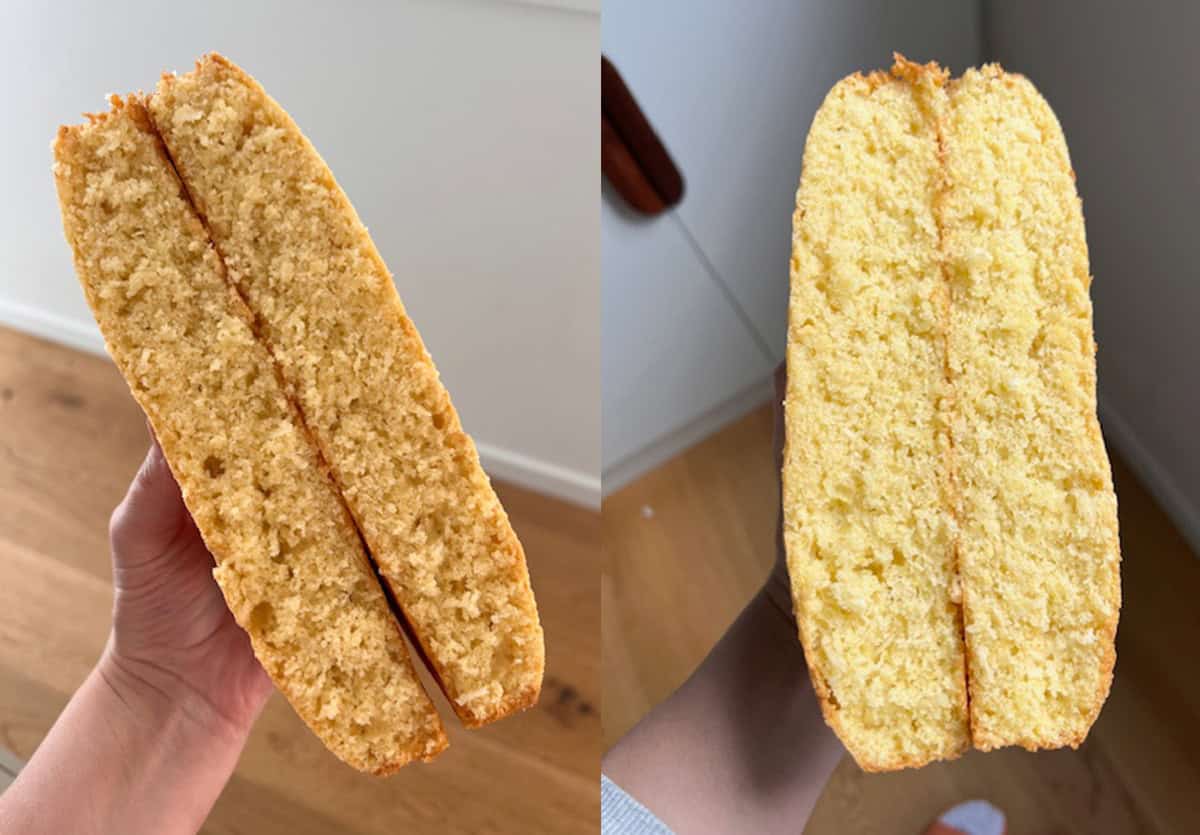
After making this cake six times (and completely emptying out my poor butter stash), I settled on using the reverse creaming method. It truly is the easiest way to create fluffy coconut cake layers.
Fresh lemon zest, rich coconut cream and toasted shredded coconut flakes make this tender cake a dream. And once you add a four ingredient creamy lemon buttercream – you have a true bakery-style naked cake that everyone will love. Perfect for a special occasion or Easter dessert.
Ingredients for Lemon Coconut Cake
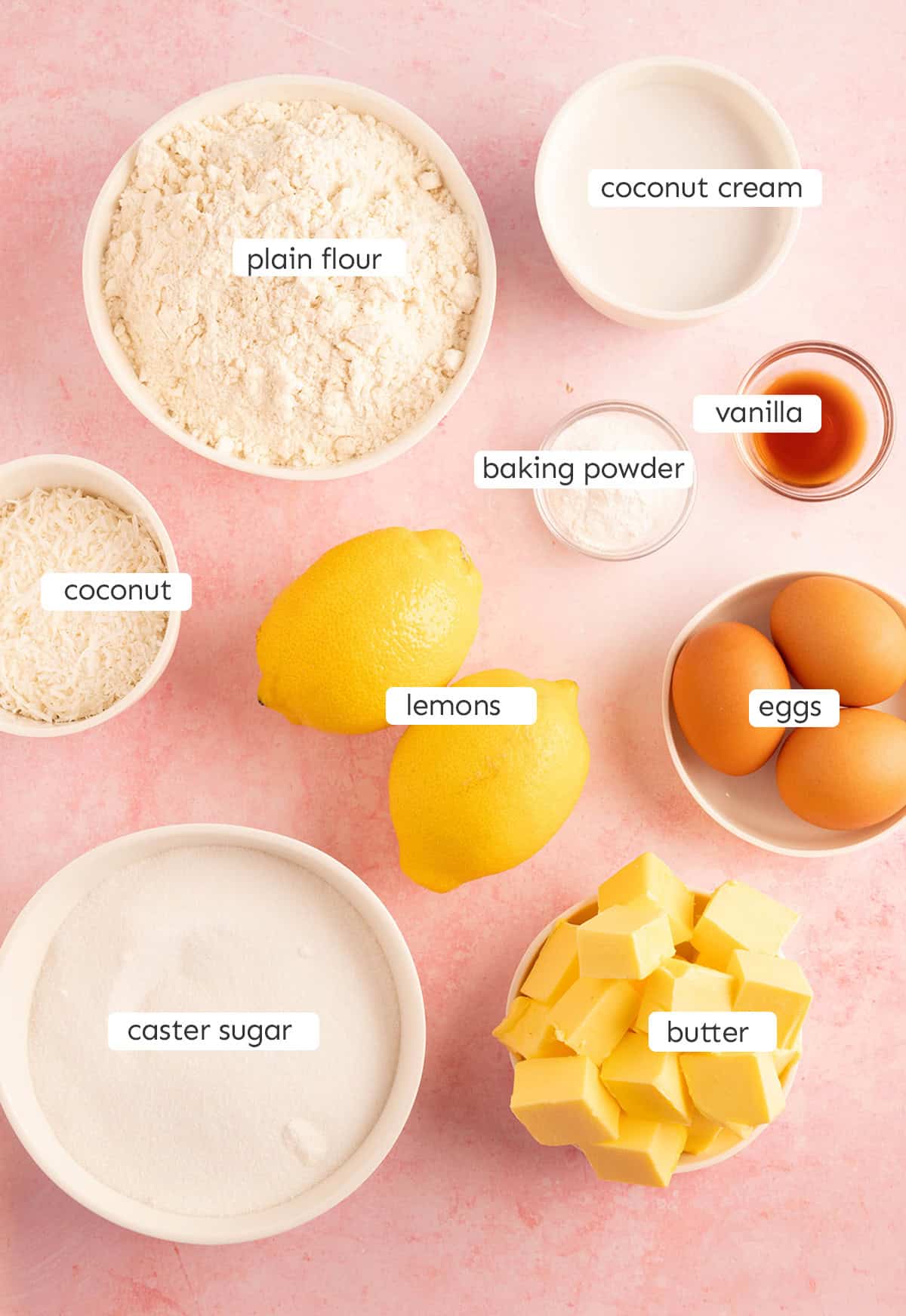
This Lemon Coconut Sponge uses basic pantry staples, plus a few special ingredients. Here are some notes on the key ingredients you’ll need, including any substitutions you can make.
- Butter: This cake uses butter and lots of it to create a rich and flavourful crumb. You will need softened butter, so leave it out of the fridge for a few hours to ensure it blends easily with the dry ingredients. I prefer to use unsalted butter and add salt to the mix. If you only have salted butter, just omit the salt included in the cake itself.
- Caster sugar: I’ve chosen caster sugar for this cake recipe to really help the lemon flavour to shine, as opposed to a brown sugar. If you don’t have access to caster sugar, which is a fine white sugar, granulated sugar will be fine.
- Fresh lemons: Rather than lemon juice or lemon extract, this cake simply uses fresh lemon zest for it’s lemon flavour. You’ll need at least two large lemons, or three smaller ones for the cake – and a couple more for the icing!
- Vanilla extract: I add pure vanilla extract to the cake sponge, but if you prefer you could add a dash of coconut extract.
- Coconut cream: I tested this recipe using both coconut cream and coconut milk. I prefer coconut cream since it has a slightly higher fat content, but coconut milk works too. Be sure to shake the can before opening in case it’s separated.
- Shredded coconut: For extra coconut flavour, I’ve added toasted shredded coconut into the cake batter. Desiccated coconut will work too if you prefer a shorter strand. Just choose an unsweetened coconut and I’ll show you how to freshly toast it below. You can also decorate the cake with extra toasted coconut or you could use flaked coconut if you prefer.
You can find the FULL list of ingredients in the recipe card below.
How to make Lemon Coconut Cake
This layer cake uses the reverse creaming method which ensures a really soft and tender crumb. It’s a foolproof method, not requiring you to perfectly cream the butter and sugar to achieve a great cake.
You can use either a stand mixer fitted with a paddle attachment or a hand-held mixer for this recipe.
Here’s how to make the cake with step-by-step photos, but you can find the full instructions and method in the recipe card below.
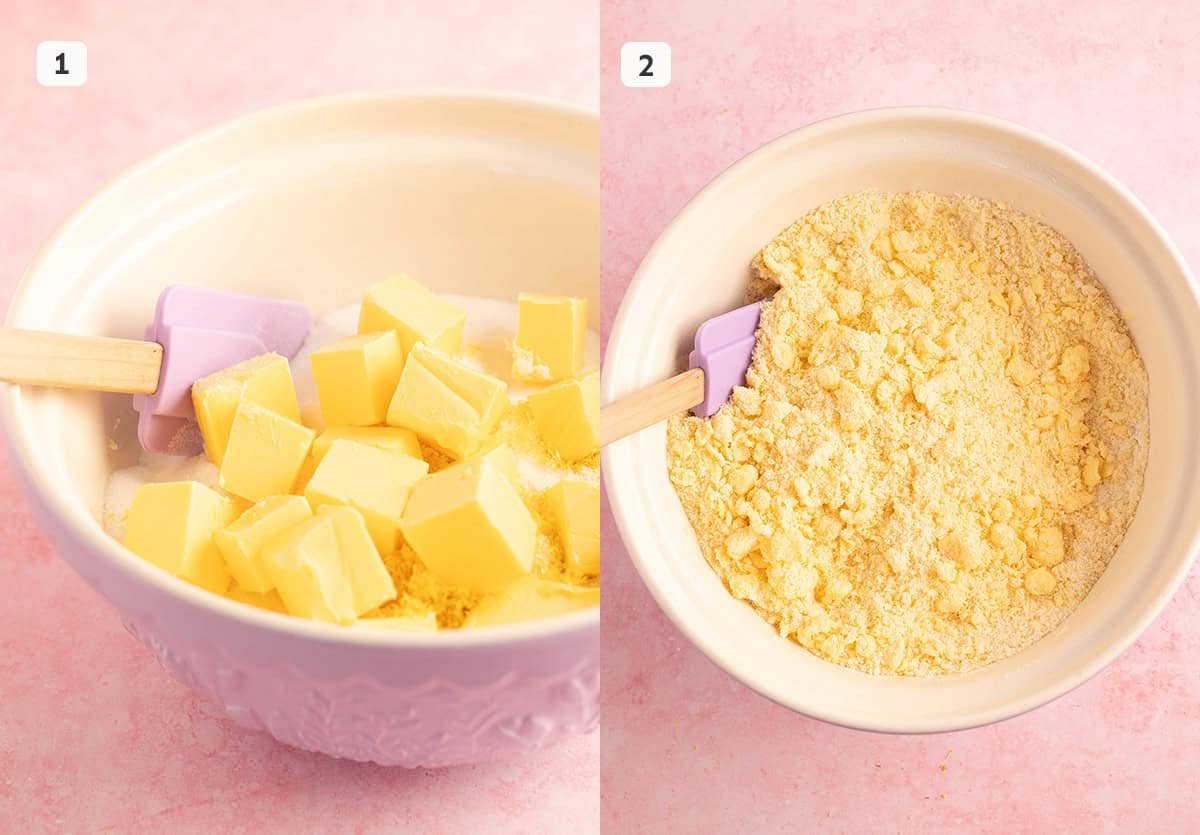
Step 1: In a large mixing bowl, add flour, sugar, baking powder, salt, fresh grated lemon zest and butter.
Step 2: Beat with an electric mixer on low speed, until butter is broken into small pea-sized pieces and completely covered in flour.
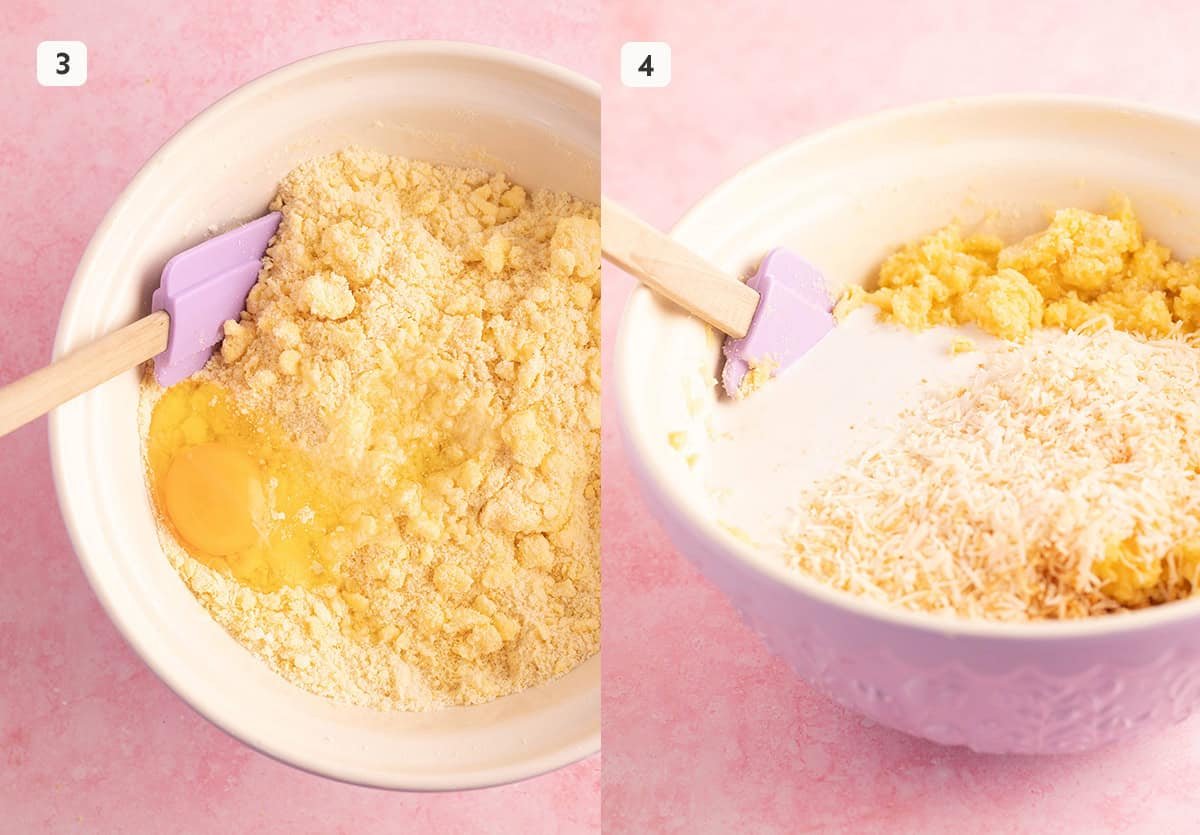
Step 3: Next, add eggs, one at a time, while continuing to mix on low speed. Mixture will be lumpy and dry.
Step 4: Add coconut cream, vanilla and toasted coconut. Beat on low speed until combined and then turn up to medium speed and beat briefly until mixture is creamy and smooth.
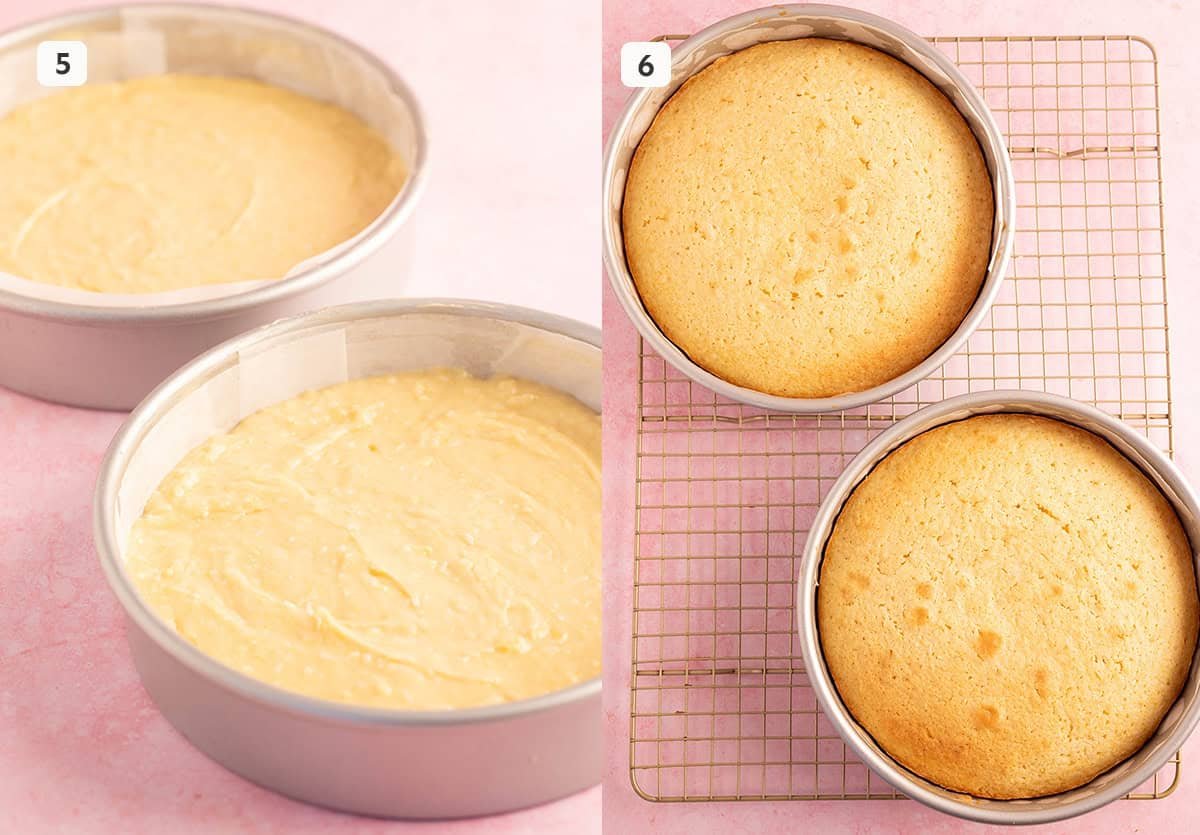
Step 5: Divide cake batter between your two prepared pans. Bake for approximately 30-35 minutes or until a skewer inserted in the middle comes out clean.
Step 6: Carefully transfer cakes to a wire cooling rack to cool completely.
REVERSE CREAMING METHOD
By mixing together softened butter and the dry ingredients FIRST, you are coating the butter in flour, and essentially the flour in butter. This creates a barrier which slows down the development of gluten once you add the wet ingredients. In other words, it’s a more foolproof way of creating a soft, tender crumb.
How to toast coconut
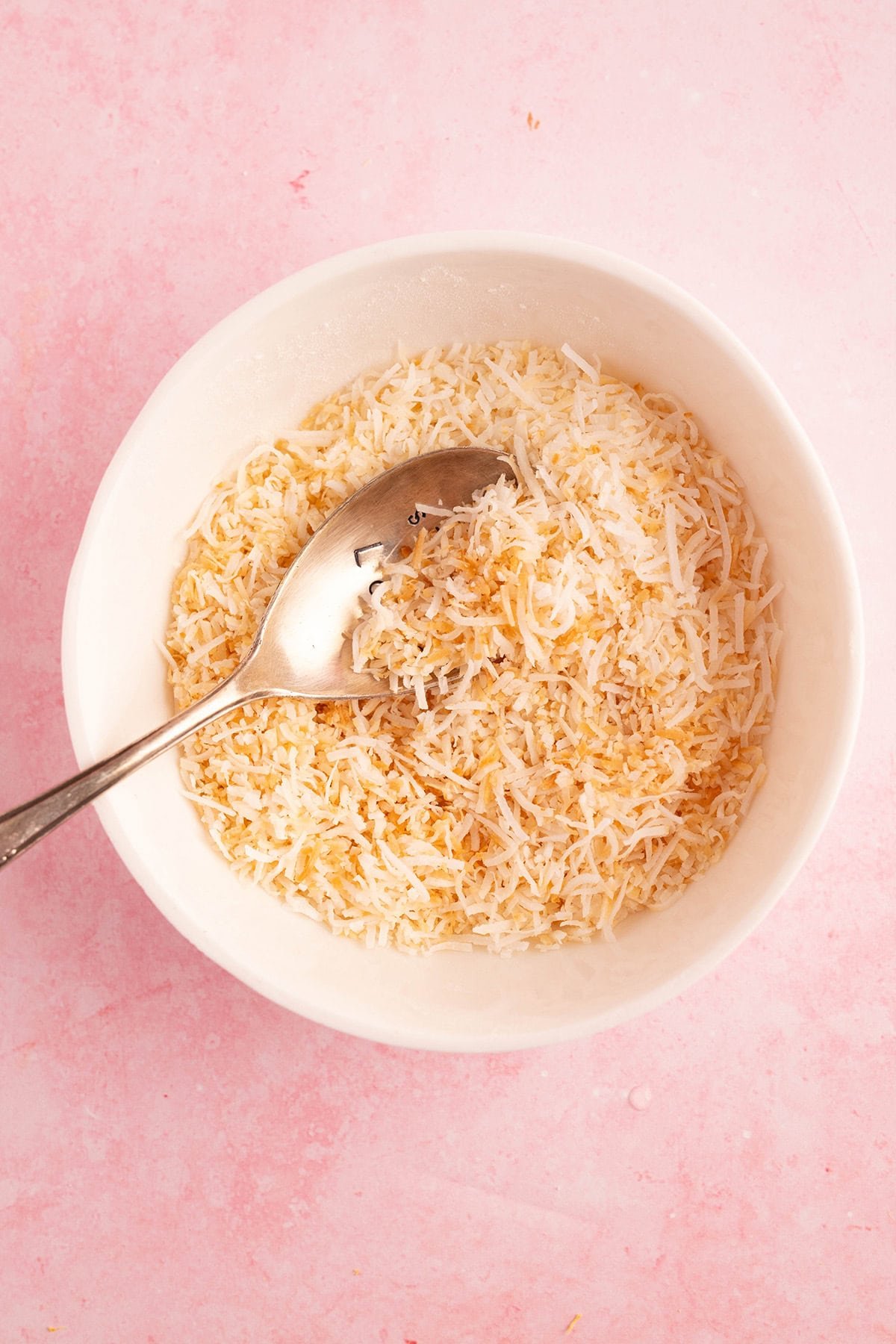
save this recipe
Take your Lemon Coconut Cake to the next level by toasting your coconut before adding it to your cake batter – and use the leftovers to decorate your cake!
Here’s how to toast your coconut in three simple steps:
- Place a large shallow frying pan on medium heat.
- Add coconut and spread out into one even layer.
- Stir occasionally until coconut is light golden brown.
Remove coconut from heat and let is cool completely before adding to your cake.
Ingredients for Lemon Coconut Buttercream
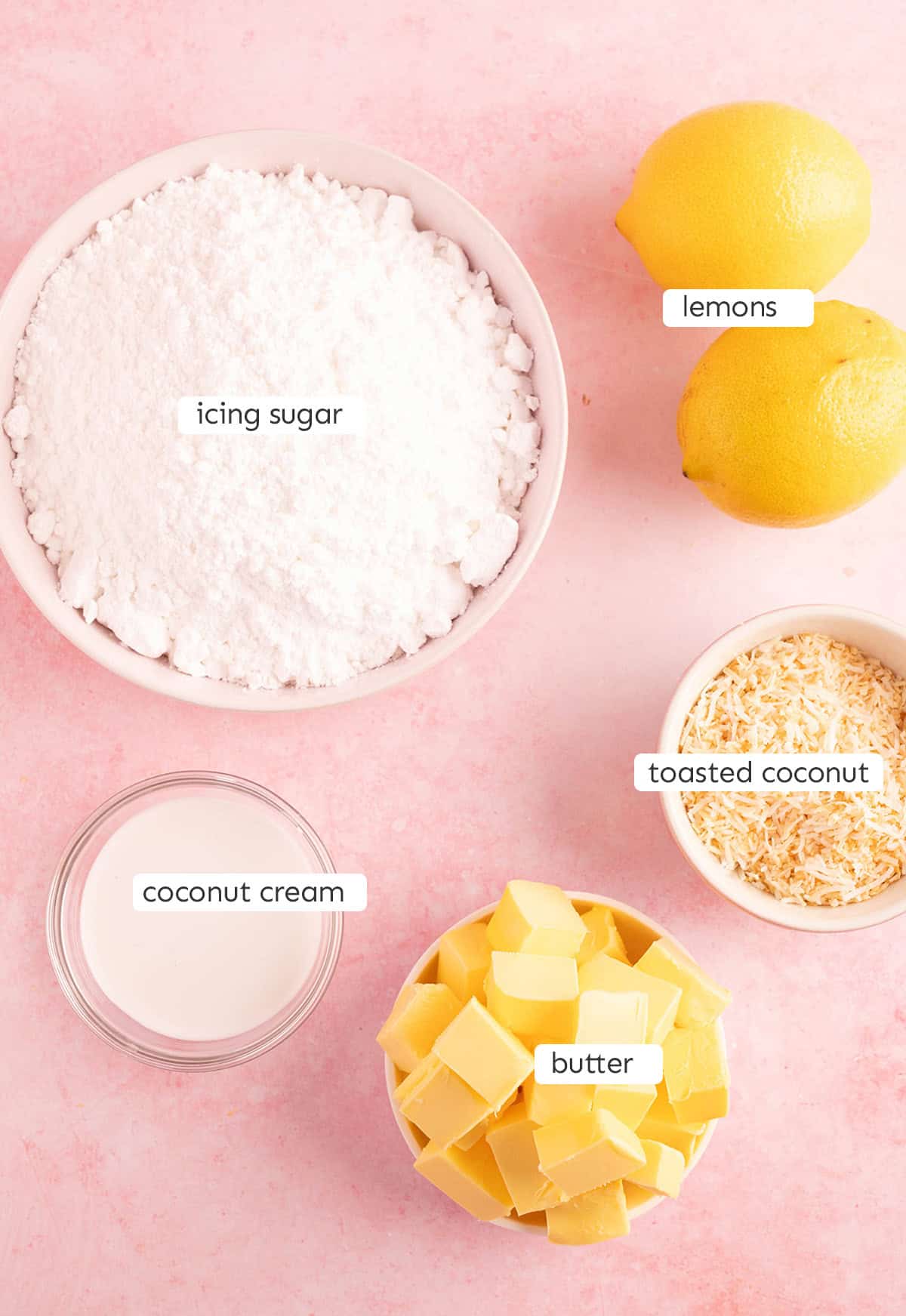
You only need four ingredients to make my easy Lemon Coconut Buttercream – plus some toasted coconut for decorating! Here’s what you will need:
- Butter: Just like the cake, butter is the star of the show here. Make sure your butter is softened and it’ll whip up into a light and fluffy buttercream in minutes!
- Icing sugar: You will need icing sugar, also know as powdered sugar or confectioner’s sugar for the buttercream. Be sure to sift the sugar beforehand to get rid of any lumps and ensure it blends beautifully with the butter.
- Fresh lemons: Plenty of fresh lemon zest helps to make this buttercream really POP with flavour.
- Coconut cream: Use leftover coconut cream instead of regular milk to give this buttercream a creamy texture. Coconut milk will work too!
How to make Lemon Coconut Buttercream
This is my simple Lemon Coconut Buttercream recipe. It pairs beautifully with this cake but you could also use it on Lemon Cupcakes or even a Vanilla Cake.
You can use either a stand mixer fitted with a paddle attachment or a hand-held mixer for this recipe.
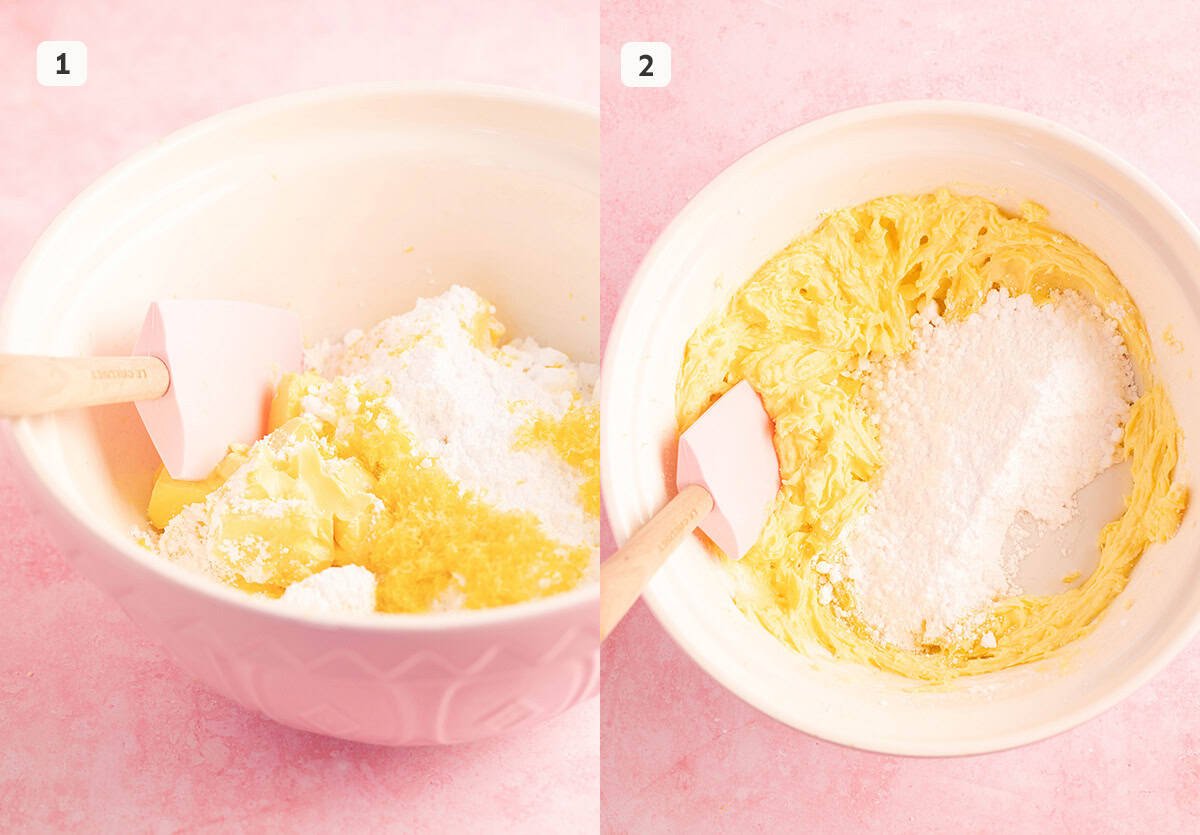
Step 1: In a large bowl, add butter, one third of the icing sugar and freshly grated lemon zest. Beat with an electric mixer on low speed for 1 minute or until just combined.
Step 2: Add remaining icing sugar and 2 tablespoons of coconut cream and continue to beat on low speed.
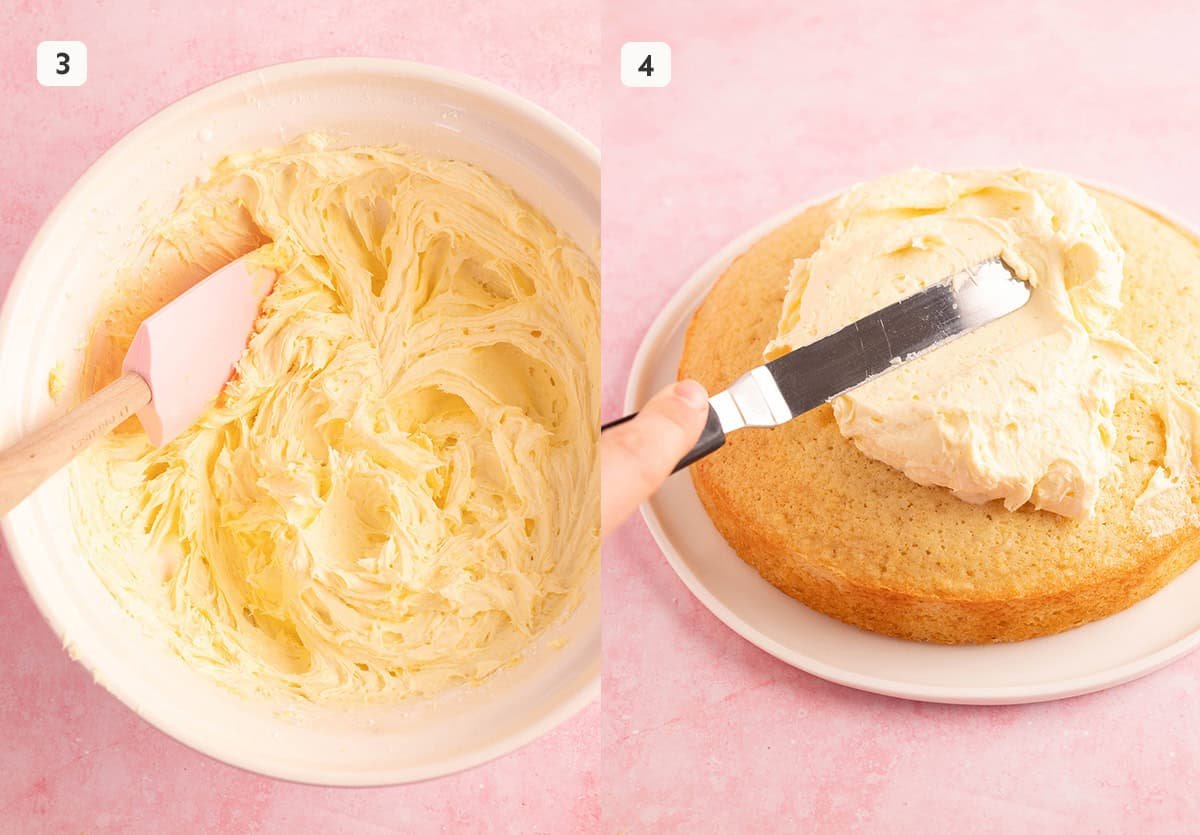
Step 3: If the frosting it too thick, add an extra tablespoon of coconut cream. Turn mixer to medium-high and beat for another 1-2 minutes or until buttercream is pale, light and creamy.
Step 4: Spread half of the frosting on top of one cake layer, then carefully add the remaining cake layer on top.
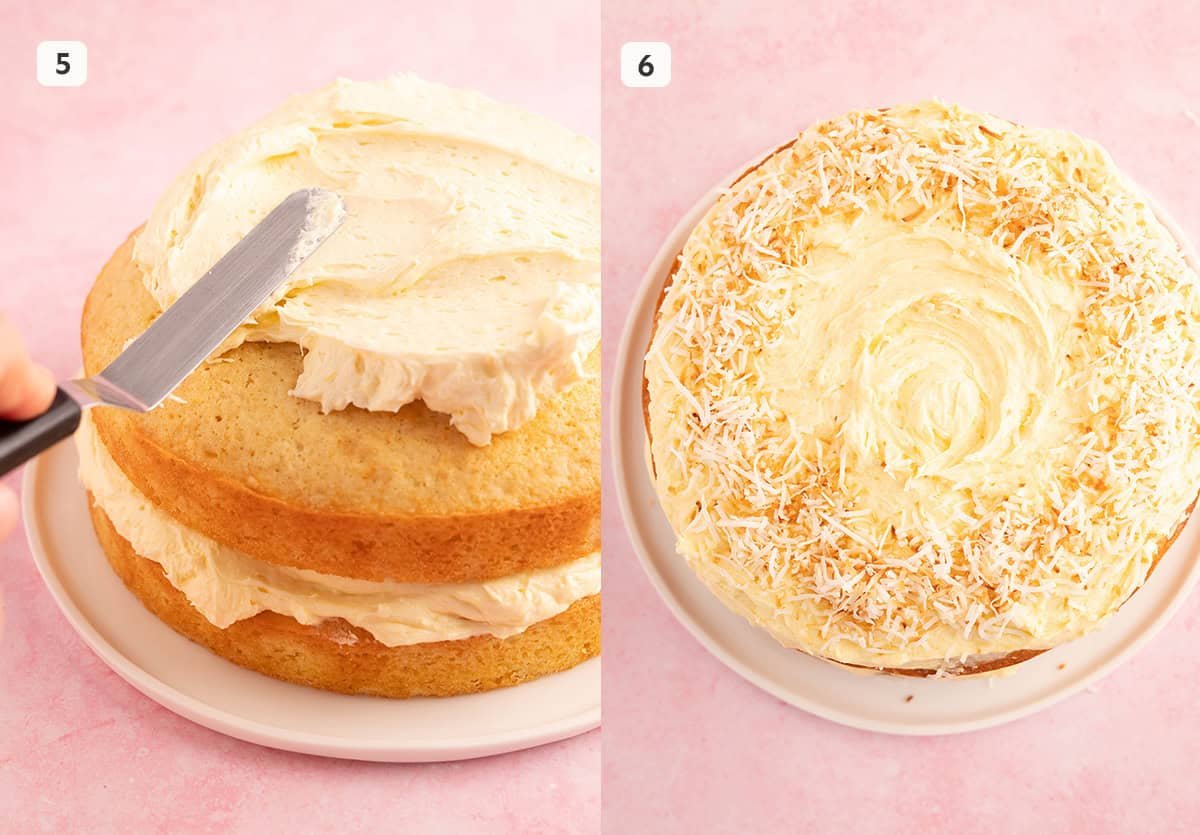
Step 5: Cover the top of the cake with remaining buttercream. Spread out into one even layer.
Step 6: Decorate cake with extra toasted coconut. Then slice and serve!
Storage instructions
Storage instructions: Unfrosted, you can keep this cover this cake in plastic wrap and store it at room temperature. If you are making it ahead of time (even one day in advance) I recommend freezing it to lock in the freshness. Simply defrost at room temperature to then frost and serve.
Once frosted, store this cake in an airtight container at room temperature. You can also freeze leftover slices to enjoy at a later date. Defrost at room temperature to enjoy.
Jess’s recipe tips
After making this cake many, many times over the last few weeks, here are my tips to ensure your recipe success.
- Use softened butter: To ensure your cake has a soft crumb, you’ll need to mix your butter with the dry ingredients. This step will be quick and easy as long as your butter is softened – if it is too hard, you’ll have large lumps of butter which won’t easily blend.
- Shake your coconut cream can: Coconut cream and coconut milk tend to separate over time. Before opening your can, give it a good shake to ensure you are using both the water and solids together (not just one or the other).
- Don’t over-bake your cakes: Keep an eye on the time and try not to over-bake these cakes otherwise they will dry out along the edges.
- Wait for the cakes to cool: Don’t be tempted to frost your cake while it’s still warm. Make sure they are completely cooled before adding your buttercream – or the top layer will go sliding.
Frequently asked questions
Yes. I’ve tested this cake using both coconut cream and coconut milk. Both work. Choose a full fat coconut cream if you can, otherwise a full fat coconut milk is the next best thing. Give the can a good shake before using it to ensure it hasn’t separated.
Yes! You could add a layer of lemon curd into the middle of the cake, on top of the buttercream. Divine!
Yes. Omit the vanilla extract and use 1/2 teaspoon coconut extract if you prefer.
Yes, this recipe will make two 8-inch round cakes, three 6-inch round cakes or one layer 9 by 13 inch sheet cake. Baking temperature and times will be around the same. Check all at the 30 minute mark.
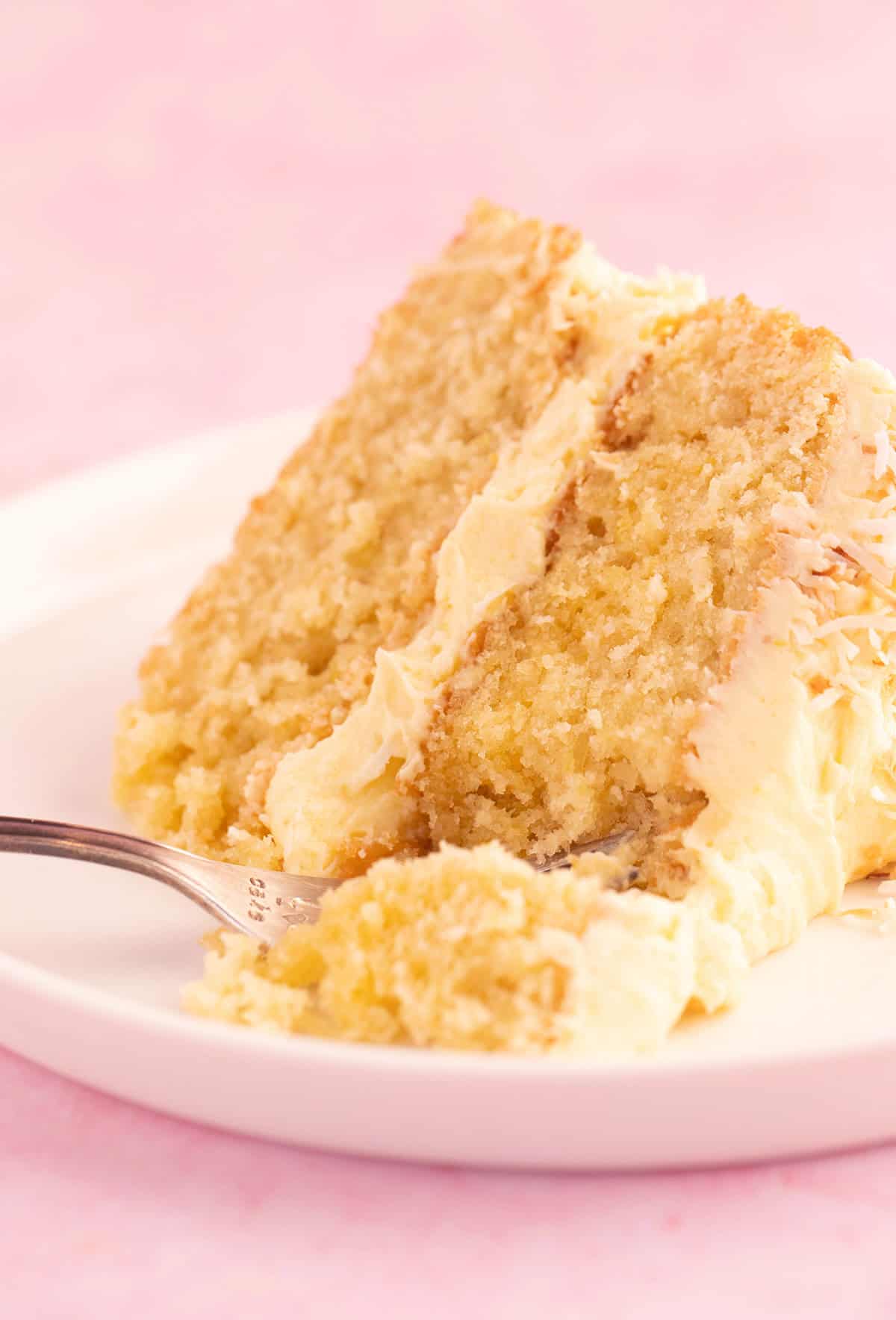
More Lemon Desserts
Did you make this recipe? Don’t forget to rate the recipe and leave a comment below. Hungry for more? Join me on Instagram, YouTube, Facebook, Pinterest and TikTok for more amazing recipe ideas.
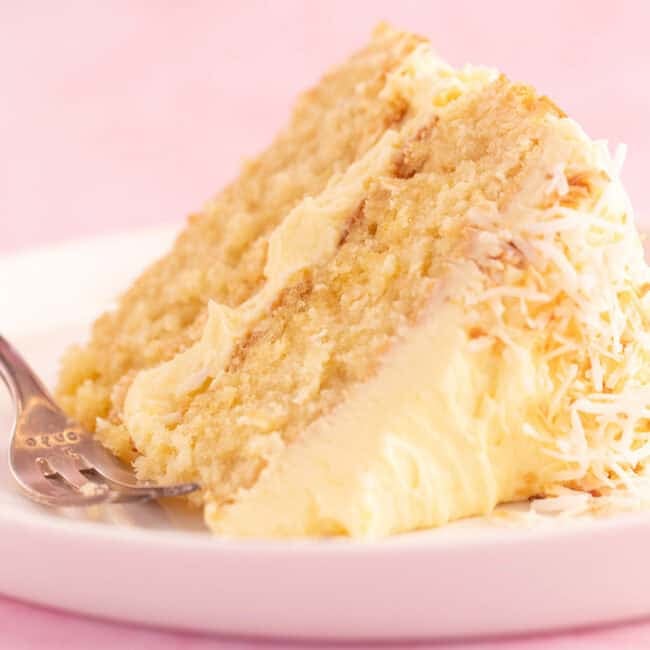
Let’s Bake
Lemon Coconut Cake Recipe
A beautiful layered Lemon Coconut Cake complete with lemon coconut buttercream.
Ingredients
Lemon coconut cake
- 315 grams (2 and 1/4 cups) plain flour or all purpose flour
- 300 grams (1 and 1/2 cups) caster sugar or granulated sugar
- 2 and 1/2 teaspoons baking powder
- 1/2 teaspoon salt
- Zest of 2 large lemons, finely grated
- 230 grams unsalted butter, softened
- 3 large eggs, room temperature
- 240 ml (1 cup) full fat coconut cream, room temperature
- 1 teaspoon vanilla extract
- 45 grams (3/4 cup) shredded coconut, toasted (see notes)
Lemon coconut buttercream
- 230 grams unsalted butter, softened
- 250 grams (2 cups) icing sugar or powdered sugar, sifted
- Zest of 2 large lemons, finely grated
- 2–3 tablespoons coconut cream, room temperature
- 45 grams (3/4 cup) shredded coconut, toasted (see notes)
Instructions
- Lemon coconut cake
Preheat oven to 180 C (350 F) standard / 160 C (320 F) fan-forced. Grease and line two 8-inch round cake pans with baking or parchment paper. - In a large mixing bowl, add flour, sugar, baking powder, salt and fresh grated lemon zest. Add butter and beat with an electric mixer on low speed, until butter is broken into small pea-sized pieces and completely covered in flour.
- Next, add eggs, one at a time, while continuing to mix on low speed. Pour in coconut cream and vanilla. Start to beat on low speed and then turn up to medium speed. Add toasted coconut. Mixture should be creamy and smooth.
- Divide cake batter between your two prepared pans. Bake for approximately 30-33 minutes or until a skewer inserted in the middle comes out clean. Carefully transfer cakes to a wire rack to cool completely.
- Lemon buttercream
In a large mixing bowl, add butter, half the icing sugar and freshly grated lemon zest. Beat with an electric mixer on low speed for 1 minute or until just combined. - Add remaining icing sugar and 2 tablespoons of coconut cream and continue to beat on low speed.
- If the frosting it too thick, add an extra tablespoon of coconut cream. Turn mixer to medium-high and beat for another 1-2 minutes or until buttercream is pale, light and creamy.
- Spread half of the frosting on top of one cake layer, then carefully add the remaining cake layer on top. Cover top of the cake with the remaining frosting. Decorate with extra toasted coconut flakes.
Notes
Coconut cream: I tested this recipe using both coconut cream and coconut milk. I prefer coconut cream since it has a slightly higher fat content, but coconut milk works too. Be sure to shake the can before opening in case it’s separated.
Shredded coconut: For extra coconut flavour, I’ve added toasted shredded coconut into the cake batter. Desiccated coconut will work too if you prefer a shorter strand. Just choose an unsweetened coconut and I’ll show you how to freshly toast it below.
Toasting shredded coconut: Place a large shallow frying pan on medium heat. Add coconut and spread out into one even layer. Stir occasionally until coconut is light golden brown. Remove coconut from heat and let it cool completely before adding to your cake.
Reverse creaming method: By mixing together softened butter and the dry ingredients FIRST, you are coating the butter in flour, and essentially the flour in butter. This creates a barrier which slows down the development of gluten once you add the wet ingredients. In other words, it’s a more foolproof way of creating a soft, tender crumb. However, if you prefer the traditional creaming method, you can absolutely do that instead. See instructions below.
Traditional creaming method: If you prefer to make this cake using the traditional creaming method you can. Simply add softened butter and caster to a large mixing bowl. Beat together using an electric mixer on medium speed for 1 minute or until pale and creamy. Add vanilla and eggs and mix on medium speed until combined. Finally, add flour, baking powder, salt, milk and yogurt. Mix briefly until you have a thick and creamy cake batter. Then continue with the recipe above from step 6 onwards.
Cake size: This recipe will make two 8-inch round cakes, three 6-inch round cakes or one layer 9 by 13 inch sheet cake. Baking temperature and times will be around the same. Check all at the 30 minute mark.
Storage instructions: Unfrosted, you can keep this cover this cake in plastic wrap and store it at room temperature. If you are making it ahead of time (even one day in advance) I recommend freezing it to lock in the freshness. Simply defrost at room temperature to then frost and serve. Once frosted, store this cake in an airtight container at room temperature. You can also freeze leftover slices to enjoy at a later date. Defrost at room temperature to enjoy.

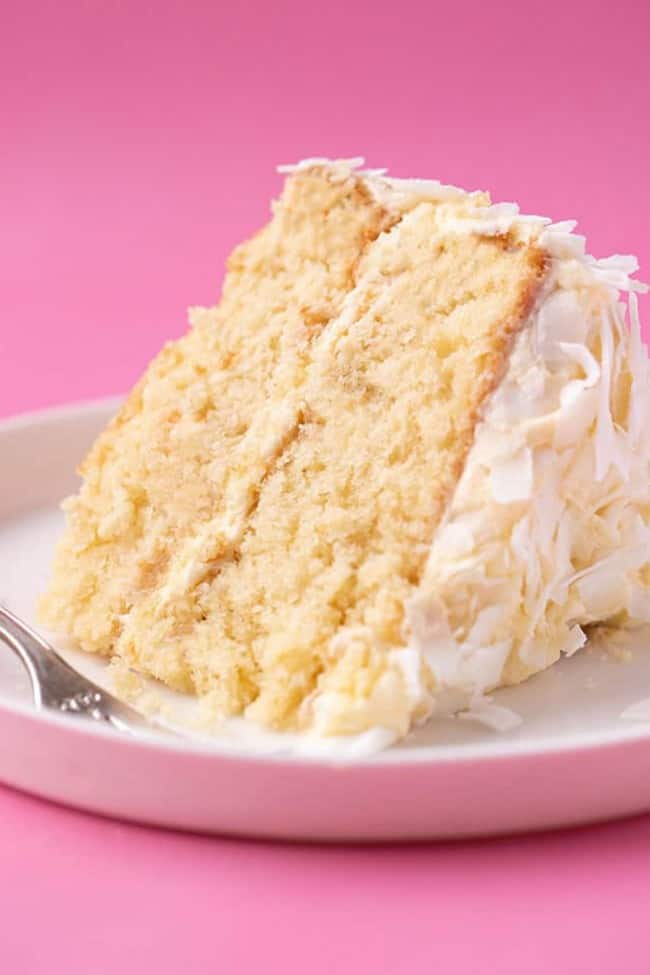
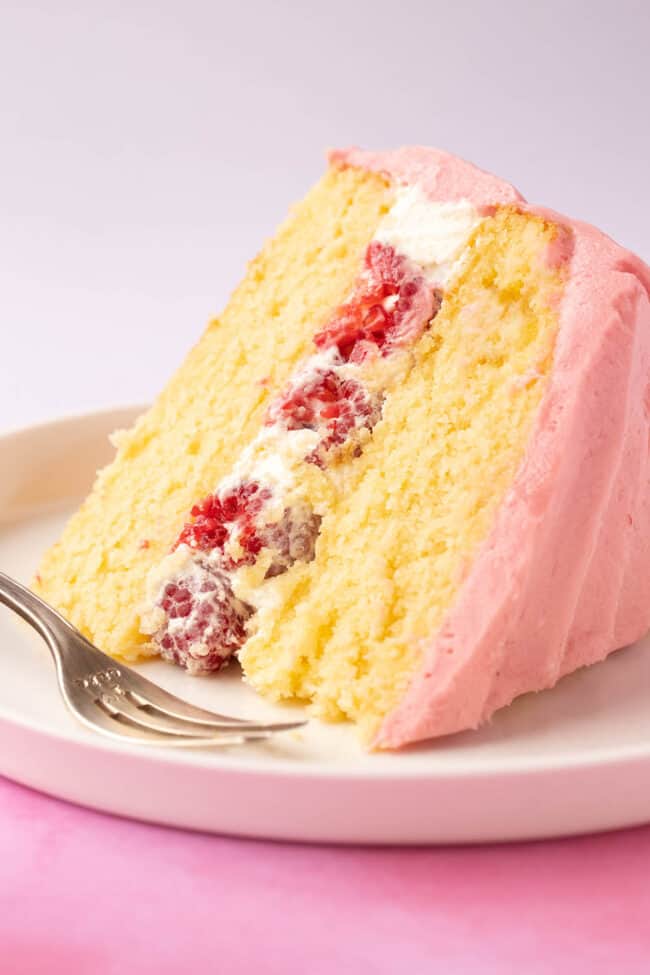
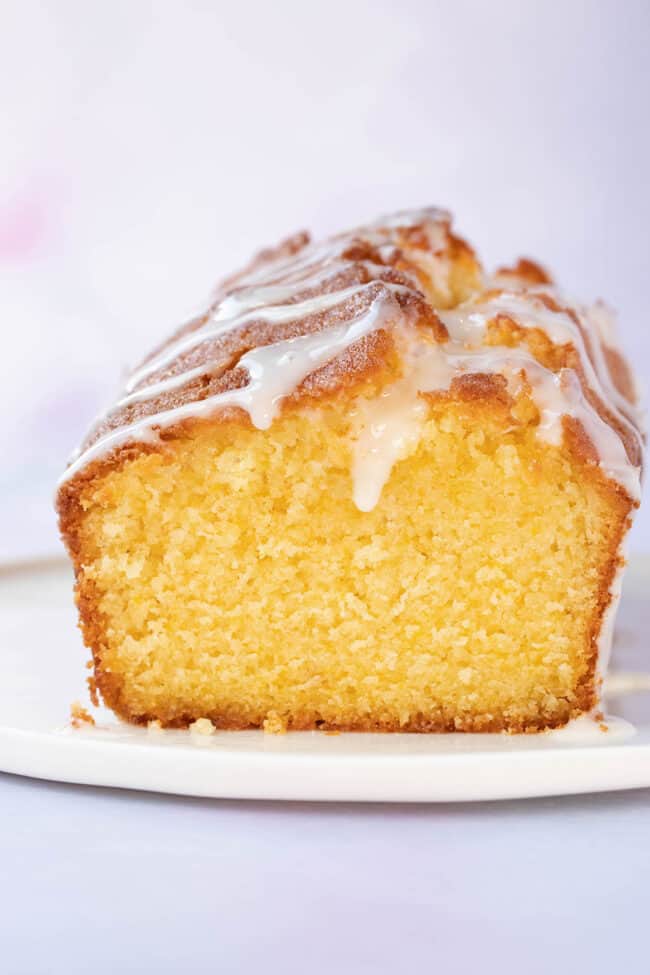

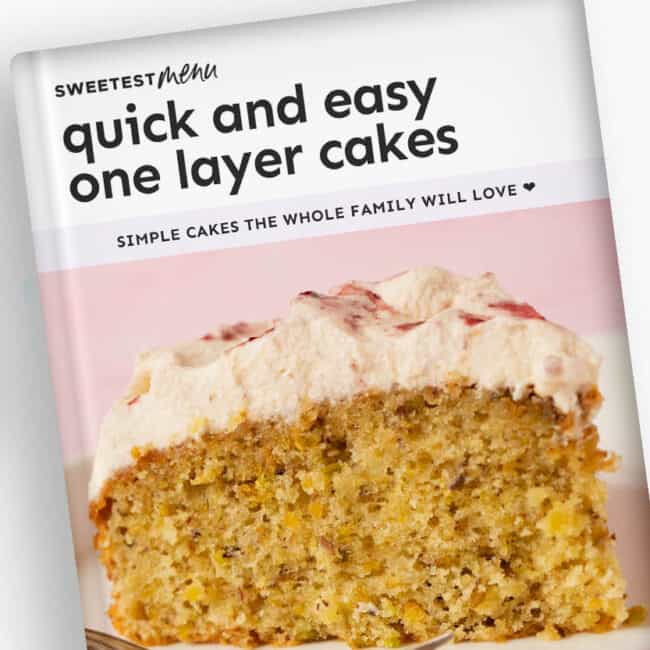
Marjan says
Hi Jessica
If I wish to use coconut milk , what quantity should I use? Thank you
Jessica Holmes says
Hi Marjan, just the same amount, 1 cup for the cake.
Marjan says
Thank you Jessica. Will this cake stay good refrigerated as in it won’t be too hard if kept cold?
Jessica Holmes says
Hi Marjan, this cake will firm up in the fridge as most butter cakes do. I recommend freezing it if you want to make it ahead of time and keeping it at room temperature to serve. Alternatively, if you do pop any leftovers in the fridge, wake them up by placing them in the microwave for 10-20 seconds.
Wren says
Absolutely delicious. I used desiccated coconut as that was what I had handy. Lovely combination of lemon and coconut. I will definitely make this again!! Easy recipe to follow. Thanks Jess 😘
Jessica Holmes says
I’m so glad you enjoyed this one Wren!!
Joanna says
For the storage instructions, does that mean you can make and frost the cake and keep the whole thing at room temperature overnight?
Jessica Holmes says
Hi Joanna, yes you can if you live at a cool temperature. Or my preference is to keep the cakes wrapped and simply frost as you are ready to serve. You can easily make the buttercream ahead of time too! It can live in the fridge or even the freezer and then just defrost to use. If it’s a little thick, add a splash of milk to stir it or beat it on a low speed to bring it back to life.
Josh says
I loved this cake! Especially the frosting.
Jessica Holmes says
So glad to hear that Josh!